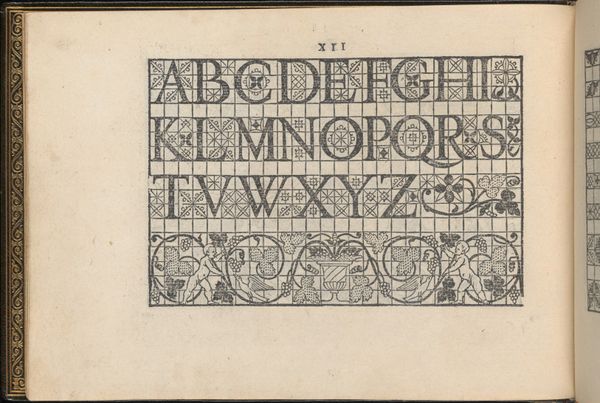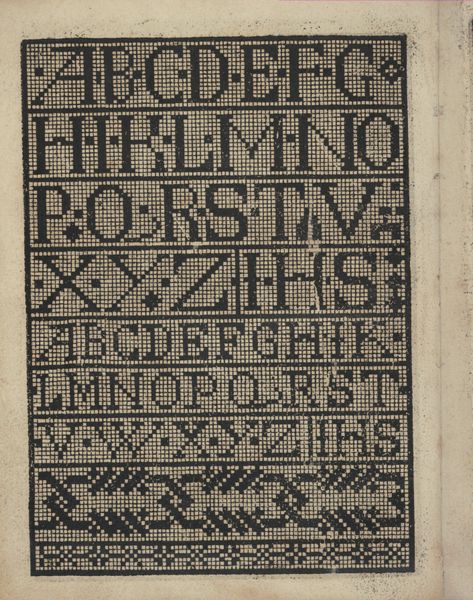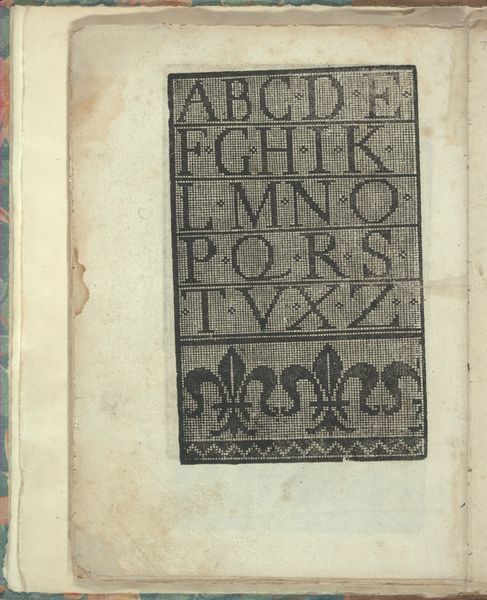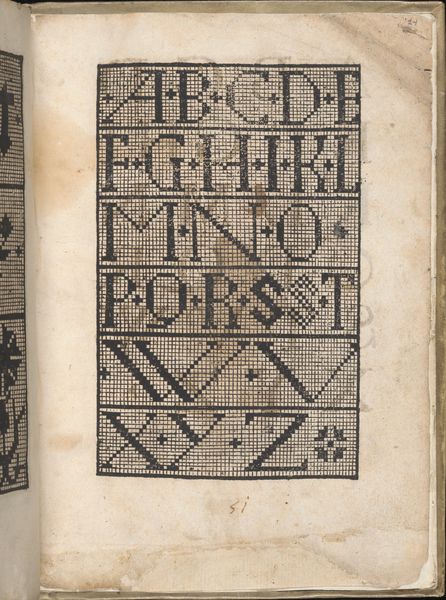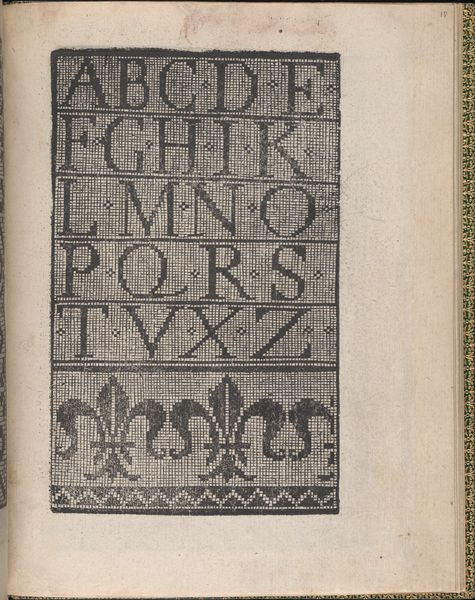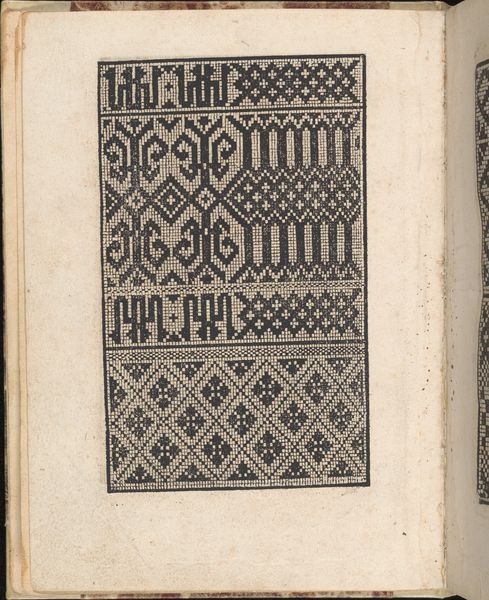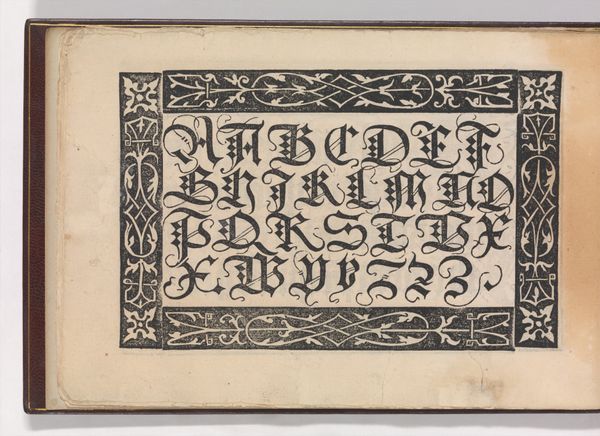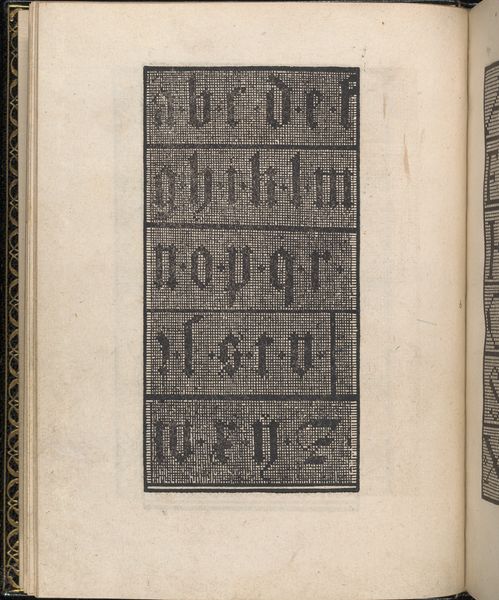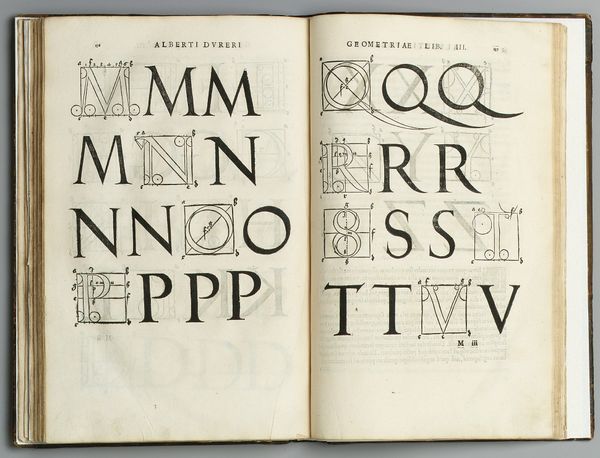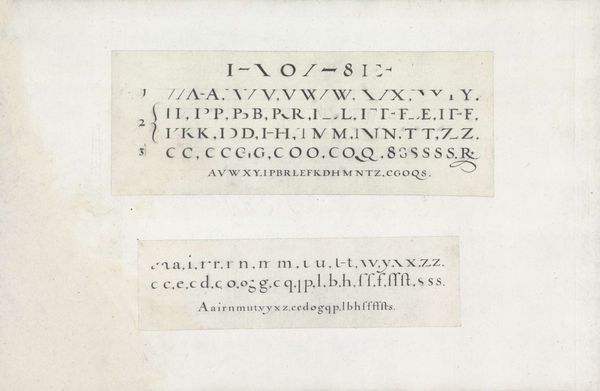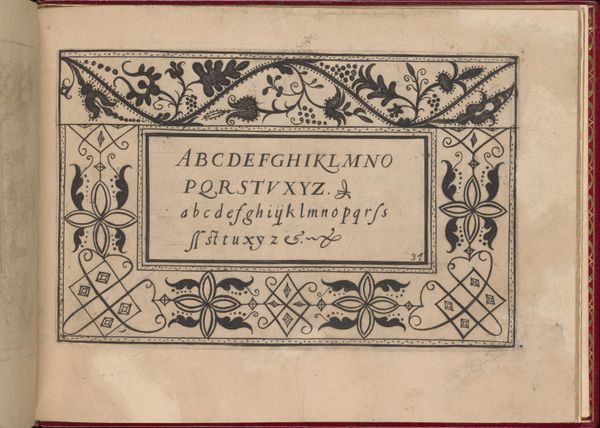
La Vera Perfettione del Disegno di varie sorti di recami, page 32 (recto) 1567
0:00
0:00
drawing, print, etching, typography
#
drawing
# print
#
etching
#
11_renaissance
#
typography
Dimensions: Overall: 6 5/16 x 8 7/16 in. (16 x 21.5 cm)
Copyright: Public Domain
Editor: This etching from 1567 is by Giovanni Ostaus. It’s called "La Vera Perfettione del Disegno di varie sorti di recami, page 32 (recto)." The title is a mouthful! The neat grid of letters gives me a very disciplined impression. What do you make of it? Curator: It's interesting how you perceive discipline. I see it more as a reflection of the period's social context, especially the role of women. This pattern book provided designs for embroidery, a highly valued skill and one of the few socially acceptable artistic outlets for women. How does that influence your view? Editor: That makes sense! Seeing it that way, I think the presentation of the alphabet demonstrates a tool for them to literally create words or patterns, while remaining in this very strict, almost mathematical grid, it speaks to creative expression within confines. So was it about accessibility of design? Curator: Precisely. The rise of printmaking allowed designs, previously confined to elite circles, to circulate widely. Books like this democratized access, shaping aesthetic tastes and spreading cultural values among a growing literate public. Think of the politics of imagery - what’s included, and who gets to decide. What did embroidery represent socially then? Editor: Wow, I never considered the wider distribution aspect like that. And that embroidery might also have expressed certain class and cultural values, not just decoration. Now, it makes me think about what skills are encouraged through education and society! Curator: Exactly. Examining how the image functions within its social and historical context unlocks a deeper understanding of its meaning. It’s never just a pretty alphabet. Editor: I learned to think about design manuals as tools of both individual creation and also cultural expression and distribution. Curator: Absolutely. The museum is about asking not just *what* is art, but also *how* it circulates, impacts, and reflects the world around it.
Comments
No comments
Be the first to comment and join the conversation on the ultimate creative platform.

